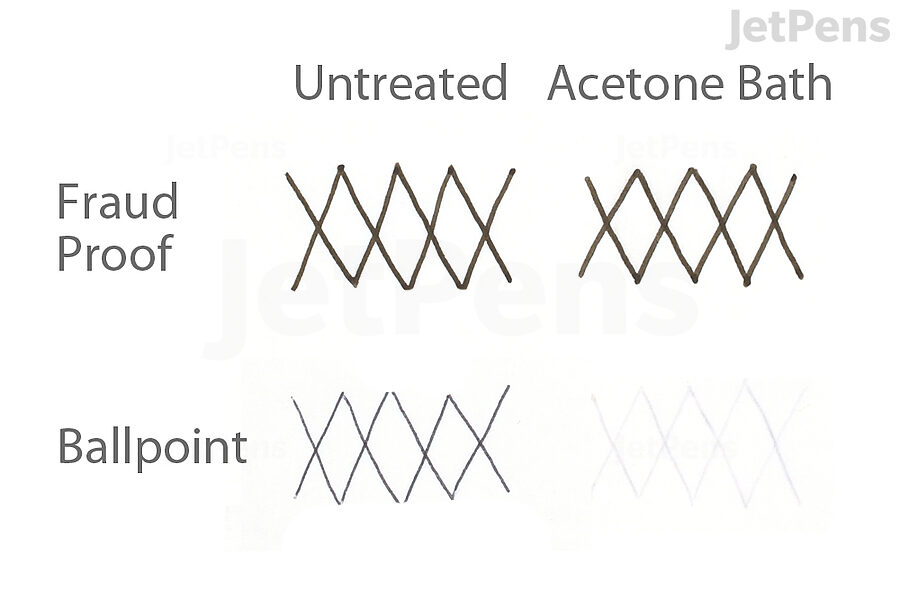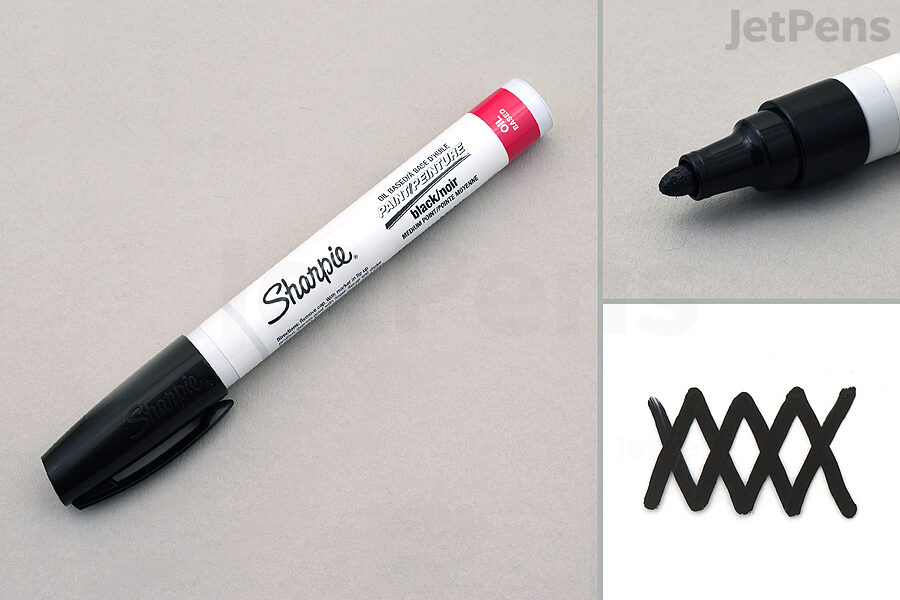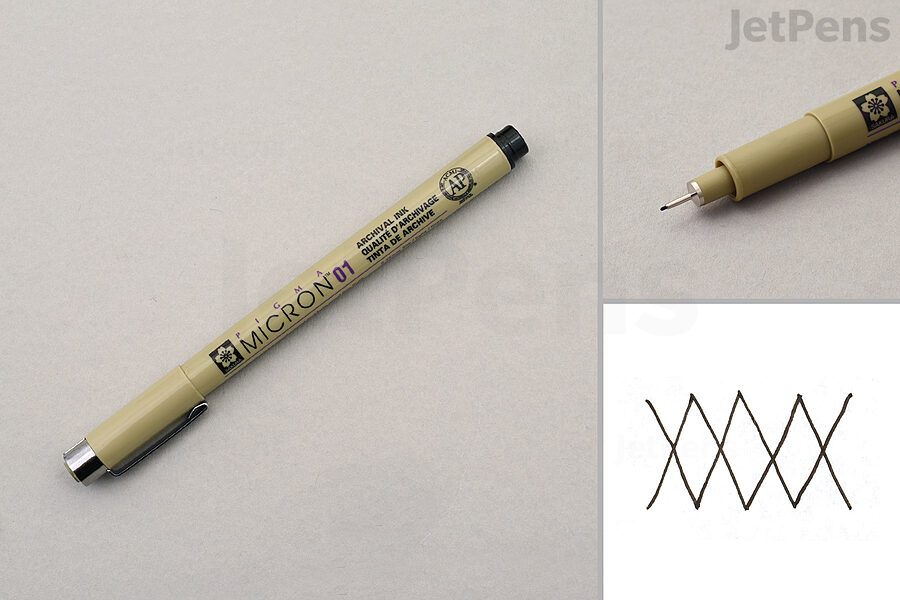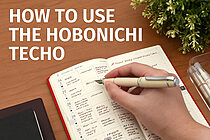| Pentel EnerGel Permanent Gel Pen | Acid Free | Fade Resistant | 0.5 mm, 0.7mm | Black, Red, Blue |
| Sakura Classic Gelly Roll Gel Pen | Neutral pH | Fade Resistant | 0.6 mm, 0.8 mm | Black, Blue, Royal Blue, Purple, and Burgundy (fraud-resistant colors) |
| Sakura Pigma Micron Pen | Neutral pH | Fade Resistant | 0.15 mm to 0.5 mm | Black, Pink, Red, Brown, Orange, Yellow, Green, Blue, Purple |
| Uni Jetstream Ballpoint Pen | Not Acid Free | Fade Resistant | 0.28 mm, 0.38 mm, 0.5 mm, 0.7 mm, 1.0 mm | Black, Pink, Red, Brown, Orange, Green, Blue, Purple |
| Uni-ball Air Rollerball Pen | Acid Free | Fade Resistant | 0.7 mm | Black, Blue |
| Uni-ball Signo UM-151 Gel Pen | Acid Free | Fade Resistant | 0.28 mm, 0.38 mm, 0.5 mm, 0.7 mm | Black, Pink, Red, Brown, Orange, Yellow, Green, Turquoise, Blue, Purple, Gray, Gold, Silver, Copper, White |
| Uni-ball Vision Elite Rollerball Pen | Acid Free | Fade Resistant | 0.5 mm, 0.8 mm | Black, Red, Brown, Green, Blue, Purple |























































